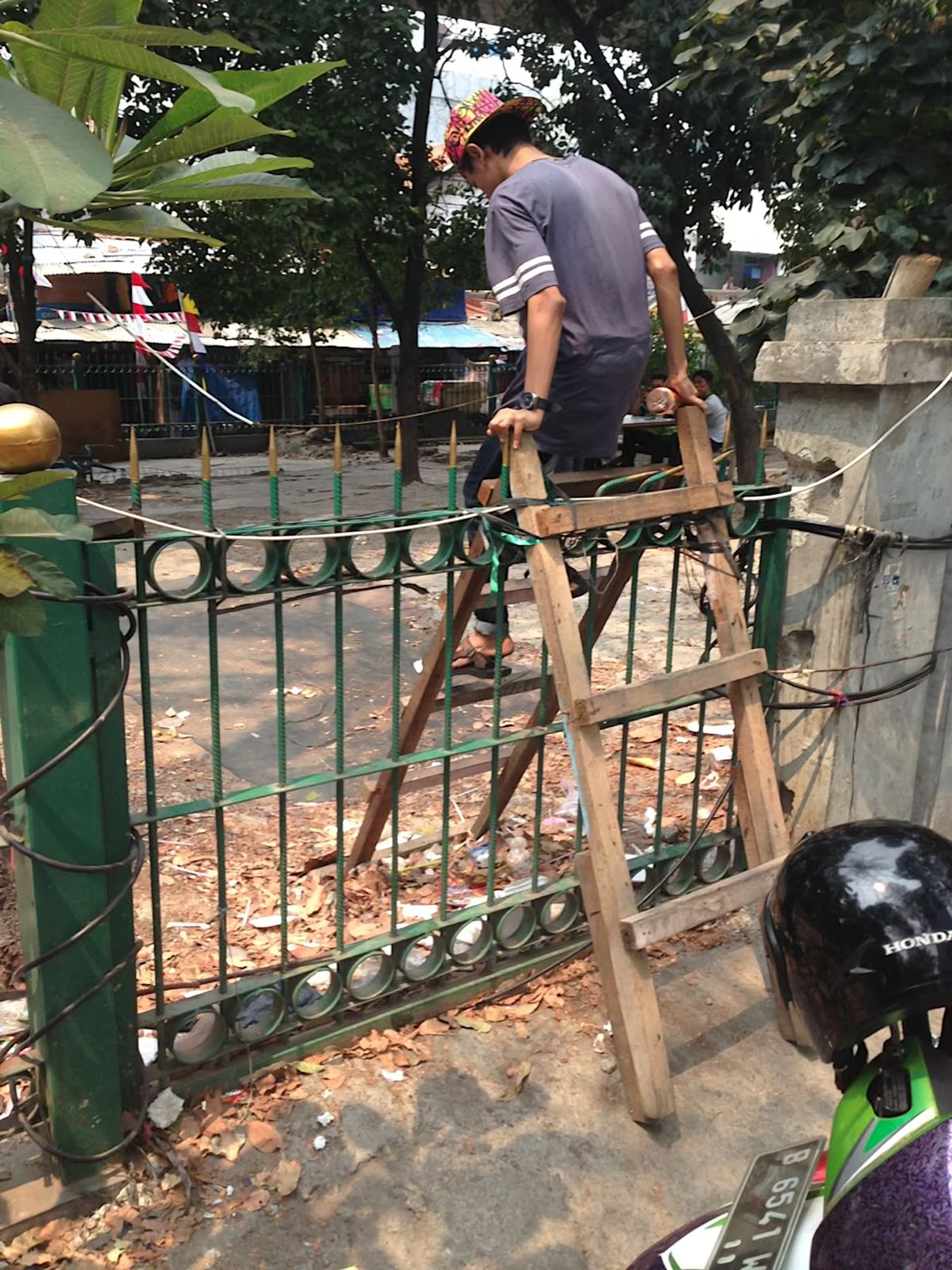Smartypants cities
December 25, 2014 — November 5, 2019
buzzword
cooperation
culture
design
diy
economics
housing
incentive mechanisms
institutions
insurgency
making things
policy
spatial
straya
the rather superior sort of city
wonk
Suspiciously similar content
Notes towards the ubiquitous monitoring and automating of our built environment. The Internet of Big Things.
1 Ideas to discuss
- How to Run a City Like Amazon, and Other Fables
- Smart city versus surveillance state.
1.1 Transport
Self-Driving cars will improve our cities if they don’t ruin them.
- Transportation Executive Summary — RethinkX (I have questions about how they imagine they can handle rush hour)
2 To read
Shannon Mattern, A City Is Not a Computer:
“What should a city optimize for?” Even in the age of peak Silicon Valley, that’s a hard question to take seriously. (Hecklers on Twitter had a few ideas, like “fish tacos” and “pez dispensers.”)
Adam Greenfield is the guy who rails against technocapitalist utopians and will hence not get you funded.
Also this review of his Against the smart city.
Against the smart city itself, why not?
Tom Armitage, Some of these things are not like the others
3 References
Abdulharis, Sarah, and Hendriatiningsih. 2007. “The Initial Model of Integration of the Customary Land Tenure System into Indonesian Land Tenure System: The Case of Kasepuhan Ciptagelar, West Java, Indonesia.”
Achlioptas, Clauset, Kempe, et al. 2005. “On the Bias of Traceroute Sampling: Or, Power-Law Degree Distributions in Regular Graphs.” In Proceedings of the Thirty-Seventh Annual ACM Symposium on Theory of Computing. STOC ’05.
Barbrook, and Cameron. 1995. “The Californian Ideology.” In Science as Culture.
Batty. 2015. “A Perspective on City Dashboards.” Regional Studies, Regional Science.
Bettencourt, and West. 2010. “A Unified Theory of Urban Living.” Nature.
Borgatti, Mehra, Brass, et al. 2009. “Network Analysis in the Social Sciences.” Science.
Buck, and While. 2015. “Competitive Urbanism and the Limits to Smart City Innovation: The UK Future Cities Initiative.” Urban Studies.
Cheng, and Wicks. 2014. “Event Detection Using Twitter: A Spatio-Temporal Approach.” PLoS ONE.
Daneshmand, Gomez-Rodriguez, Song, et al. 2014. “Estimating Diffusion Network Structures: Recovery Conditions, Sample Complexity & Soft-Thresholding Algorithm.” In ICML.
Gao, Song, Gao, et al. 2014. “Quantifying Information Flow During Emergencies.” Scientific Reports.
Hill. 2012. “Ravintolapäivä, Restaurant Day, Edible Urbanism and Civic Opportunism.” Cityofsound.
———. 2014a. “The commodification of everything.” In SQM: The Quantified Home.
———. 2014b. “Urban Parasites, Data-Driven Urbanism and the Case for Architecture.” Architecture + Urbanism (A+U).
Hudson, Botzen, Czajkowski, et al. 2014. “Risk Selection and Moral Hazard in Natural Disaster Insurance Markets: Empirical Evidence from Germany and the United States.”
Jennett, and Cox. 2014. “Eight Guidelines for Designing Virtual Citizen Science Projects.” In Second AAAI Conference on Human Computation and Crowdsourcing.
Kanhere. 2013. “Participatory Sensing: Crowdsourcing Data from Mobile Smartphones in Urban Spaces.” In Distributed Computing and Internet Technology. Lecture Notes in Computer Science 7753.
Kay. n.d. “Enlightened Imagination For Citizens.”
Khatoun, and Zeadally. 2016. “Smart Cities: Concepts, Architectures, Research Opportunities.” Communications of the ACM.
Kitchin, Lauriault, and McArdle. 2015. “Knowing and Governing Cities Through Urban Indicators, City Benchmarking and Real-Time Dashboards.” Regional Studies, Regional Science.
Lansing. 2000. “Foucault and the Water Temples: A Reply to Helmreich.” Critique of Anthropology.
Lansing, and Kremer. 1993. “Emergent Properties of Balinese Water Temple Networks: Coadaptation on a Rugged Fitness Landscape.” American Anthropologist.
Lansing, Kremer, and Smuts. 1998. “System-Dependent Selection, Ecological Feedback and the Emergence of Functional Structure in Ecosystems.” Journal of Theoretical Biology.
Louf, and Barthelemy. 2014. “A Typology of Street Patterns.” Journal of The Royal Society Interface.
Masucci, Stanilov, and Batty. 2013. “Limited Urban Growth: London’s Street Network Dynamics Since the 18th Century.” PLoS ONE.
McLaren, and Agyeman. 2015. Sharing Cities: A Case for Truly Smart and Sustainable Cities. Urban and Industrial Environments.
Melbourne-Thomas, Johnson, Perez, et al. 2011. “Coupling Biophysical and Socioeconomic Models for Coral Reef Systems in Quintana Roo, Mexican Caribbean.” Ecology and Society.
Naroditskiy, Jennings, Van Hentenryck, et al. 2014. “Crowdsourcing Contest Dilemma.” Journal of The Royal Society Interface.
Newell, and Wasson. 2002. “Social System Vs Solar System: Why Policy Makers Need History.” In.
Oishi, Cebrian, Abeliuk, et al. 2014. “Iterated Crowdsourcing Dilemma Game.” Scientific Reports.
Prestopnik, and Crowston. 2012. “Exploring Collective Intelligence Games with Design Science: A Citizen Science Design Case.” In ACM Group Conference.
Proust, Dovers, Foran, et al. 2007. “Climate, Energy and Water: Accounting for the Links.”
Rabbat, Figueiredo, and Nowak. 2008. “Network Inference from Co-Occurrences.” IEEE Transactions on Information Theory.
Rahmawati, and Gentini. 2008. “Pengetahuan Lokal Masyarakat Adat Kasepuhan: Adaptasi, Konflik Dan Dinamika Sosio-Ekologis.” Jurnal Sosiologi Pedesaan.
Ranard, Ha, Meisel, et al. 2014. “Crowdsourcing — harnessing the masses to advance health and medicine, a systematic review.” Journal of General Internal Medicine.
Rao. 2005. “Symbolic Public Goods and the Coordination of Collective Action: A Comparison of Local Development in India and Indonesia.” World Bank Policy Research Working Paper.
Resnick. 1997. Turtles, Termites, and Traffic Jams : Explorations in Massively Parallel Microworlds.
Romanillos, and Austwick. 2015. “Madrid Cycle Track: Visualizing the Cyclable City.” Journal of Maps.
Romanillos, Austwick, Ettema, et al. 2015. “Big Data and Cycling.” Transport Reviews.
Rosvall, and Bergstrom. 2010. “Mapping Change in Large Networks.” PLoS ONE.
Silver, Byrne, and Adler. 2021. “Venues and Segregation: A Revised Schelling Model.” PLOS ONE.
Soemardi, and Radjawali. 2004. “Creative Culture and Urban Planning: The Bandung Experience.” In The Eleventh International Planning History Conference.
Stumpf, Wiuf, and May. 2005. “Subnets of Scale-Free Networks Are Not Scale-Free: Sampling Properties of Networks.” Proceedings of the National Academy of Sciences of the United States of America.
van Albada, Helias, and Diesmann. 2015. “Scalability of Asynchronous Networks Is Limited by One-to-One Mapping Between Effective Connectivity and Correlations.” PLoS Comput Biol.
